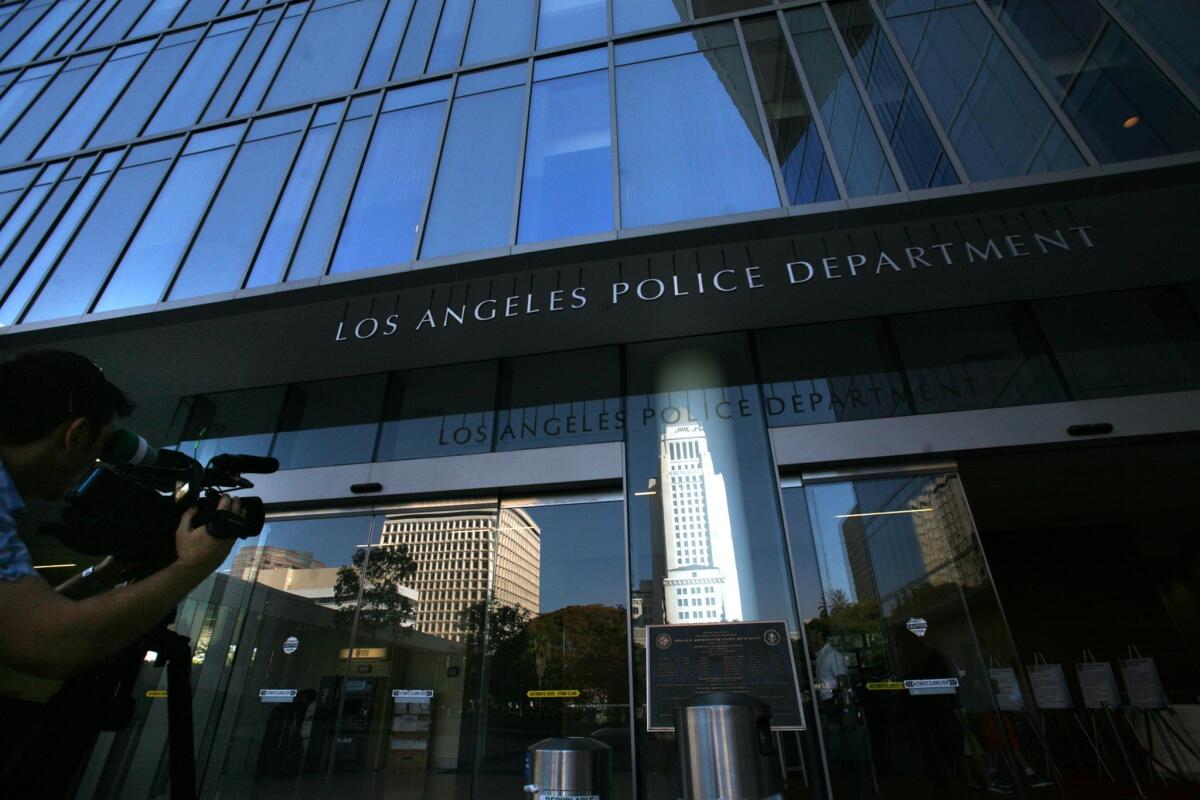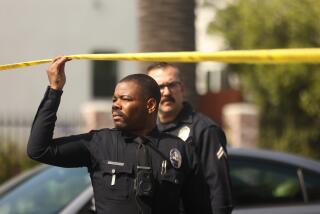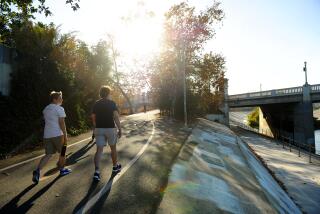Deadly violence in L.A. up 15% so far this year, mirroring national trends

As Los Angeles continues to struggle with the coronavirus crisis, economic shockwaves and protests, there is another growing problem: Homicides are up nearly 15% over last year.
The city is hardly alone as a new national study shows that the number of killings, while still far lower than decades ago, climbed significantly in a summer that saw 20 cities’ homicide rates jump 53% compared with the three summer months in 2019.
Homicides increased in places such as Atlanta and Chicago during June through August of 2020, according to an analysis by the nonpartisan Council on Criminal Justice.
Los Angeles, which was one of the cities included in the study, has recorded 226 homicides as of Saturday, compared with 197 at the same point in 2019. Since June, killings are up nearly a fifth compared with the prior year, according to data. If the numbers hold, it would mark the largest homicide increase in years.
“We are faring a lot better than other police departments when it comes to homicides,” said Los Angeles Police Capt. Paul Vernon, who oversees the Compstat unit that analyzes the city’s crime data. “Overall violent crime is down.”
Homicide detectives across Los Angeles saw a busy start to the year, with the rate of killings up more than a third before the coronavirus lockdown kept many Angelenos off the streets and many locations shuttered.
During the height of social isolation as the city tried to stem the spread of the virus, homicides were down double digits compared with 2019. But as the year moved on, homicides began to climb again and surpassed 2019 levels by the summer, a period when historically far more residents are the victims of homicide.
According to the new study, the national surge in homicides and shootings occurred across all the cities examined.
“The timing is quite compelling,” said study author Richard Rosenfeld, a renowned criminologist and Curators’ Distinguished Professor Emeritus of Criminology and Criminal Justice at the University of Missouri-St. Louis.
But he cautions that the reasons for the increase, beyond the timing of George Floyd’s killing in Minneapolis in May and the subsequent protests, aren’t clear.
Rosenfeld, who authored the study with researcher Ernesto Lopez, said there are two possibilities. One is that the pandemic caused police to alter some practices because of social distancing, making them less able to investigate, make stops or simply talk to people, which also makes it difficult to prevent retaliatory killings or disrupt a cycle of violence, he said.
The second possibility is that Floyd’s death and the protests hurt the perception and trust of law enforcement, Rosenfeld said. He said high-crime communities are generally the ones with the least trust of the police and most often subject to police violence.
“So when social unrest occurs and police distrust rises, people can turn to street justice,” he said.
Rosenfeld said rising crime followed widespread unrest over police violence, emanating from places such as Ferguson, Mo., and Baltimore in 2015 and 2016. Los Angeles, he said, was one of the places where that occurred.
In L.A., the areas most affected by the surge in homicides are in the city’s core and South L.A., historically the more violent and deadly areas.
The Rampart Division, which encompasses MacArthur Park, Westlake and near west of downtown, has seen its homicides increase from eight to 17 compared with last year. The neighboring Olympic Division has seen the largest percentage increase (160%), with 13 killings so far in 2020 compared with five last year.
Vernon said the brunt of the homicides is in traditionally high crime divisions, with South L.A.’s 77th Division leading the city with 39 killings, compared with 33 last year.
The city’s numbers aren’t on the scale of the surge in New York City, where homicides are up nearly 40% compared with this time last year.
The researchers also found that aggravated assaults jumped by 14% in the cities studied compared with the same period in 2019. By contrast, Los Angeles has seen far less of an increase in aggravated assaults, with just a 2% uptick and a 5% drop in overall violent crime.
But Los Angeles has seen the number of shootings, including those in which no one was hit, increase by nearly 14%, and the number of people hit by bullets jump by 10% compared with 2019. The number of shooting victims has long been considered the best indicator of violent crime. The national study, however, found no overall increase in gun crimes.
Nationwide, the researchers concluded that the rates of homicide and aggravated assault increased significantly in late May and early June of 2020, with those increases followed by declines in July and August. They say it is too early to tell how long those declines will last.
LAPD Chief Michel Moore earlier this month told The Times that the pandemic has helped drive gun violence and increase killings in the city this year, including by spurring economic despair and interpersonal dramas while undercutting efforts to interrupt cycles of retaliation.
Moore agreed with the researchers that social distancing had affected efforts to quell violence. He said pandemic-related rules barring visitors from local hospitals have prevented trained violence intervention workers from visiting the bedsides of surviving shooting victims, eliminating the opportunity to provide resources and emotional support, address their anger and help prevent retaliatory violence on the streets.
Several killings have unfolded at gatherings at homes because clubs and venues are out of commission under the coronavirus rules, Moore also noted. At least two deadly shootings have occurred at homes rented for parties in the Hollywood Hills.
More to Read
Sign up for Essential California
The most important California stories and recommendations in your inbox every morning.
You may occasionally receive promotional content from the Los Angeles Times.











